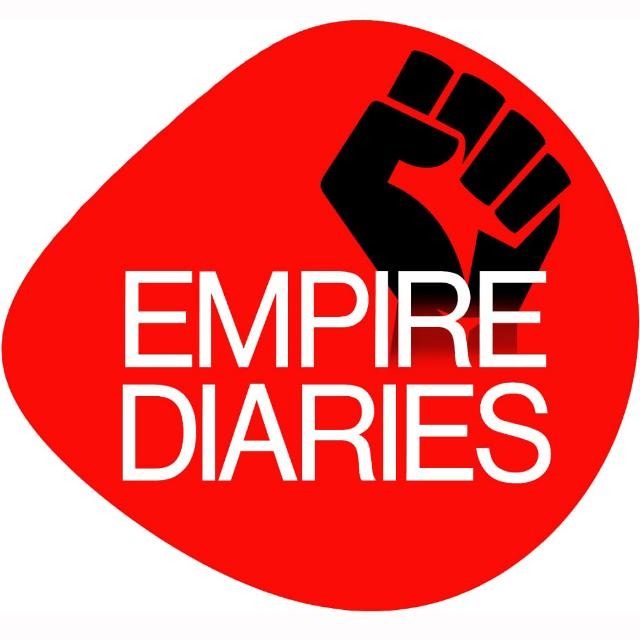Ratna and Nadim Siraj
EmpireDiaries.com
It’s been five years since the Indian government gave its public the biggest economic shock in modern history.
The demonetisation declared on November 8, 2016 still haunts India. The grassroots economy still bleeds from the damage done.
Empire Diaries closely studied certain events that took place in India and outside in the days and months before demonetisation.
The events, once carefully revisited, indicate that there was a steady build-up to the note ban announcement. They show that India’s sudden decision was not an isolated, domestic event. Instead, it was possibly a part of a larger global conspiracy to attack the cash economy of some countries.
Let’s first look at what happened on the night of November 8, 2016.
Rs 1,000 and Rs 500 bank notes were declared banned at four hours’ notice. What was the official line? A crackdown on black money, fake currency, and terror funding.
COLLATERAL DAMAGE
But none of the targets were met in a big way. Neither was a lot of black money uncovered, nor was terrorism uprooted. And there was no announcement that many fake currency rackets were busted.
Demonetisation, instead, broke the back of India’s cash-driven economy. The collateral damage dwarfed everything else.
In the years leading up to 2016, 87% of daily transactions in India used to be done in cash. A massive number of Indians had never been to a bank, forget having bank accounts. They dealt only in cash.
In such a country, a sudden ban on 86% of the currency notes in people’s hands was an economic earthquake.
Businesses shut down. Millions lost their jobs. People queued up outside ATMs and banks to lay their hands on cash that worked. Farm produce was found rotting on the roadside because buyers were out of cash. Reports came in of deaths due to the disruption.
India’s economy looked like a battlefield. It was clear a war was being fought. A war on cash. To be precise, a war on people with cash.
 ALSO READ: Justice For Julian Assange Will Be Justice For All: John Pilger
ALSO READ: Justice For Julian Assange Will Be Justice For All: John Pilger
CLUE NO. 1: DID GOOGLE KNOW IT?
So, here are some dots that we connected.
We’ll start with a report jointly published by Google and US-based Boston Consultancy Group (BCG). It came out in July 2016, exactly four months before India declared the note ban.
The report is titled “Digital Payments 2020: The making of a $500 billion ecosystem in India”. Google and BCG argued the need for Indians to switch from cash to digital in their daily transactions.
The report openly predicted that India was on the verge of a major “disruption” in a drive to go digital.
Here’s what it said:
“We expect the digital payments space to witness significant disruption in the days ahead. While the exact form and shape of disruption will only be unveiled over time, the crystal ball indicates seven trends set to transform the payments landscape in India over the next five years.”
The report has a chapter on the “disruption” it predicted. It’s titled “India payments on a similar disruption trajectory”.
Four months before demonetisation, this report was either a prophetic prediction by Google and BCG, or they simply knew about India’s secret plan and dropped a clear hint for us.
What is more audacious are the words that Google and BCG used in the report to describe the potential for India’s digital payments market.
India is “A $500 billion pot of gold”, the report says in a separate chapter by that name.
When do we call something a “pot of gold”? Obviously when we talk about a treasure that we want to rob or loot.
This is how Google, BCG and such organisations from the West look at India, a pot of gold to exploit. Looks like the East India Company days are not over yet.
So that was clue No. 1 that India’s demonetisation was not only pre-planned but perhaps known very well by some private organisations in the West.
CLUE NO. 2: DID UNITED NATIONS, BILL GATES KNOW IT?
Now we come to another case study. It’s a formal announcement that was made on September 1, 2015 – a little over two years before India’s note ban.
An international lobby group supported by the UN, called Better Than Cash Alliance, declared a partnership with the Indian government. Their goal was to “accelerate financial inclusion for everyone”.
In simple words, it was a project to help more and more Indians move away from cash for transactions, and turn to digital payment platforms.
Here’s what the alliance said in its official statement that day:
“The new partnership with the Better Than Cash Alliance, made up of governments, companies, and international organizations, is an extension of the Indian government’s commitment to reduce cash in its economy. Digital financial services lower the cost of providing financial services and make it more convenient for poor people to access their accounts.”
If the Better Than Cash Alliance was so concerned about poor Indians, then why was it trying to move them away from cash in a country where the poorest of the poor deal only in cash?
Who are the partners of this Better Than Cash Alliance?
There’s the Bill and Melinda Gates Foundation – yes, Bill Gates is part of it. Then there’s Clinton Global Initiative, Catholic Relief Services, Omidyar Group, Grameen Foundation, Gap Inc, H&M Group, Marks & Spencer, Mastercard, Visa, Coca-Cola, Unilever, USAID, and various UN entities and governments.
 ALSO READ: Revisiting Kashmir: ‘What You See From Outside Is Not Normal, It Only Seems Normal’
ALSO READ: Revisiting Kashmir: ‘What You See From Outside Is Not Normal, It Only Seems Normal’
CLUE NO. 3: DID USAID KNOW IT?
Let’s now study clue No. 3. It’s a formal announcement that was made by the powerful American funding group called USAID or US Agency for International Development.
On October 18, 2016, exactly 20 days before India announced the note ban, the USAID declared a partnership with India’s finance ministry.
It was for a project called “Catalyst”. It aimed to hold an unprecedented experiment in six Indian cities to scale up digital payments.
According to the report, here’s what the Catalyst project’s CEO Badal Malick said at the announcement:
“So far, six cities have been shortlisted, including Indore, Visakhapatnam, Kota, Jaipur, Bhopal and Nagpur, of which one will be chosen for the project… Once the city is chosen, ground operations will start by the end of this year (2016).
“This is an exciting time to get into digital payments. While there been core technology development through the India stack as well as a concerted push for digital payments by the government, there is still a last-mile gap when it comes to merchant acceptance… We want to bring a holistic ecosystem approach to these problems… The goal is to take one city and increase the digital payments 10 times in 6-12 months.”
But less than three weeks after the experiment was announced, the push for cash-to-digital began on a much bigger scale with the nationwide note ban.
 ALSO READ: Big Corporations Steer UN Food Systems Summit, Global South Pushes Back
ALSO READ: Big Corporations Steer UN Food Systems Summit, Global South Pushes Back
CLUE NO. 4: THE CRYPTIC SPEECH
Now, let’s look at hint No. 4. And this one was much closer to date.
From November 7 to 9 in 2016, New Delhi hosted the India-UK Tech Summit attended by the prime ministers of the two countries at that time – Narendra Modi and Theresa May.
On the opening day of the event on November 7 – just a day before demonetisation was announced – the Indian PM gave a speech on India-UK relations in which he said that our fintech landscape was going to see a major transformation.
Here’s what he said that day:
“A natural collaboration emerges in India’s rapidly developing financial services sector. ‘Fintech’ is emerging as the next big transformation for India as we bring 220 million new households into the umbrella of the Jan Dhan Yojana. This financial inclusion scheme is being melded with mobile technology and the unique identification card to form the largest social security programme in the world.”
The interesting thing is, the summit was attended by representatives of a European company called De La Rue.
Why are we talking about De La Rue here?
Because De La Rue is an influential company that provides currency-printing technology and machinery to countries around the world.
The company was associated with India’s currency production since 1876, long before independence.
So, the Indian PM hosts a currency-printing company at a summit. Then right in the middle of it, he announces a note ban, raising questions on the future of cash-printing. Is that a mere coincidence?
Was India’s note ban announcement a message to the pro-cash lobby?
De La Rue’s ties with Indians go back to the 19th century, but the company of late has said it does not print India’s money.
Curiously, one of the official websites under the Reserve Bank of India (RBI) says just the opposite.
Bharatiya Reserve Bank Note Mudran Pvt Ltd (BRBNMPL), which handles currency printing in India, says it got its currency-printing machinery in Mysore from De La Rue.
The website says:
“The machinery at Mysore site has been supplied by De La Rue Giori, now KBA Giori, Switzerland, and that of the Salboni site by Komori Corporation, Japan. Both the presses are equipped with sophisticated security surveillance systems.”
In 1965, De La Rue partnered with Italian inventor Gualtiero Giori to form a Switzerland-based firm called De La Rue Giori, which builds cash-printing equipment for various countries.
So, the point is, are powerful pro-digital, anti-cash lobby groups trying to disrupt the economies of countries where cash is a vital part of daily life? If so, then why?
Are poor Indians caught in the crossfire?
The note ban has been tried out to various degrees in many other countries, and for various reasons, such as in Nigeria, Ghana, Myanmar, former Soviet Union, Zimbabwe, North Korea, to name a few.
Many commentators around the world, such as German economist Norbert Haering, have pointed out that indeed there’s an ongoing war on cash, and India’s case was quite likely a part of that war.
A debate is raging out there, especially in the West, over the continuing need and viability of physical currency as the primary mode of transactions.
The IMF (International Monetary Fund) came out with a working paper in March 2017 – a few months after India’s demonetisation – titled “The Macroeconomics of De-Cashing”. In the working paper authored by Alexei Kireyev, the IMF argued the case for replacing cash with digital modes of payment.
 ALSO READ: Bhima Koregaon Accused Sudha Bharadwaj’s Family Worried About Spread Of Covid-19 In Byculla Prison
ALSO READ: Bhima Koregaon Accused Sudha Bharadwaj’s Family Worried About Spread Of Covid-19 In Byculla Prison
The IMF working paper says:
Defined as replacing paper currency with convertible deposits, de-cashing would affect all key macroeconomic sectors. The overall macroeconomic impact of de-cashing would depend on the balance of growth-enhancing and growth-constraining factors… The paper… is purely illustrative and is designed to provide a roadmap for a systematic evaluation of de-cashing… The paper draws a balance on possible positive and negative macroeconomic implications of de-cashing, and proposes policies capable of augmenting its economic and social benefits, while reducing potential costs.”
Nobody will spoon-feed us the truth. It’s up to us study the events and connect the dots. But what we know for sure is that in financially-troubled countries such as India, meddling with cash just doesn’t work.
It can result in an economic earthquake, as we saw in 2016. As the saying goes, why try to fix something that isn’t broken?









